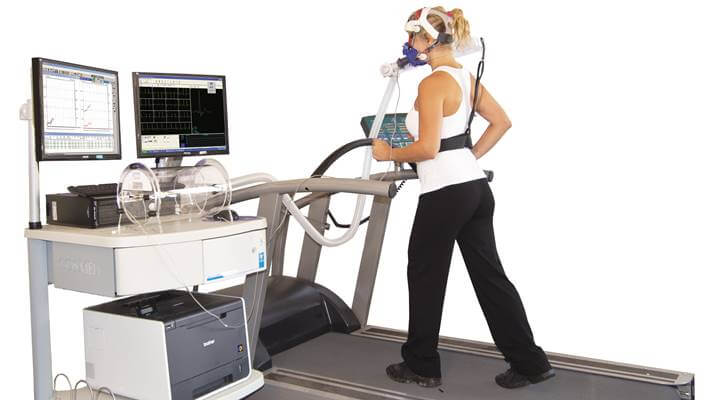A stress test can identify any abnormalities with how your blood gets to your heart since your heart will have to work harder to keep up with you. There are several types of stress tests, but the treadmill variant is the most common. So, how long is a treadmill stress test?
You’ll be hooked up to a few pieces of equipment that will monitor your heart rate, breathing, and blood pressure. It can be stressful if you don’t know what to expect when you’re told you need a stress test.
You’ll want to know how long you’ll be exercising if you’re not already a very active person or if you have a busy schedule that you don’t want to break.
We’ll talk about the treadmill stress test today, including how long it lasts and how to get ready for it.
How Long Is a Treadmill Stress Test?
A treadmill stress test takes about an hour to perform, but that does not include the time it takes to prepare. Your workout will only take you about 15 minutes to finish.
It’s nothing to be concerned about because you’ll just be on the treadmill for a quarter of your appointment time.
The remaining 45 minutes will be spent by the doctor asking you questions about your health, medical history, and normal workout routine.
If you don’t work out regularly, don’t add anything to these responses. The doctor will alter the stress test based on how often you exercise on a regular basis.
If you overestimated your answers, you might find that your stress test is too difficult for your body to handle.
So, to prevent being put in danger by mistake, answer the questions truthfully. The doctor will listen to your heart and lungs briefly before the test.
What Happens During A Treadmill Stress Test?
After the basic preparation and questions have been addressed, a nurse will assist you in getting ready for your test. Your chest, arms, and legs will be fitted with electrodes. Small sticky patches that will not fall off during the test.
If your skin is exceptionally hairy, the electrodes may need to be shaved for proper adhesion. ECG equipment, which records your heartbeat, has electrodes attached to it.
Your arm will be fitted with a blood pressure cuff to monitor how your blood pressure changes. Some patients are even asked to breathe through a tube while exercising so that doctors can monitor their lungs.
The physician will invite you to step onto the treadmill, which will begin at a slow pace. They will gradually increase the treadmill’s speed throughout the course of the 15 minutes. Don’t worry; they won’t start at full speed straight soon!
You’ll maintain exercising until you meet the goal you and your doctors set for yourself or until you begin to experience symptoms that force you to stop. Symptoms include shortness of breath, disorientation, acute chest discomfort, and a few others.
The doctor will advise you to stand for a few seconds after completing your activity before lying down with the devices still attached. This helps the doctor to ensure that there are no problems with your heart’s ability to recover to its resting rate.
What Exactly Are the Objectives of Stress Tests?
Your doctor may recommend a stress test for a variety of reasons. In addition to the stress test, further tests such as a nuclear stress test or an echocardiographic stress test may be recommended.
These are stress tests that rely on imaging.
Diagnosing Heart Rhythm Problems
When your electrical impulses are not properly synchronized with your heart rhythm, arrhythmias occur.
As a result, your heart is forced to beat too quickly or too slowly. You can also suffer irregular heartbeats (palpitations). Diagnosing these issues can assist you in receiving the treatment you require.
Assisting With the Treatment of Cardiac Conditions
If you have a cardiac problem that has been diagnosed, but the doctors aren’t sure how to treat it, a stress test can help them figure out how effective a treatment is for your body.
Knowing how much activity your heart can withstand is another helpful technique to figure out how to proceed with treatment. Stress testing can help identify if a person needs a heart transplant.
The findings can be used to put someone on a transplant waiting list, bringing them closer to recovery. The test can also be used to identify whether or not someone needs cardiac surgery, such as a valve replacement.
Diagnosing Coronary Artery Disease
The coronary arteries are your heart’s major blood and oxygen conduits. Because they are so crucial to the body, any damage or disease to them can be devastating.
The most common source of harm is cholesterol clogs. A stress test can help you figure out if you have coronary heart disease and when you should get help.
How Should I Prepare For A Treadmill Stress Test?
Almost sure, your doctor will give you advice on how to prepare for your treadmill stress test.
You may be asked not to eat or drink anything for a few hours before the test, and you will not be permitted to smoke. Caffeine may be forbidden on the day of your test as well.
Make sure you’re dressed comfortably and that you’re wearing walking shoes.
Bottom Line
It’s natural to be nervous when you’re informed you need a stress test, but don’t get too worked up about it. The exercise portion of the test will take about 15 minutes, and the entire test will take about an hour.
The stress test can reveal a variety of critical heart conditions and help doctors come up with a treatment plan that is right for you.
Make sure you’ve thoroughly prepared for your stress test and that you’ve correctly answered all of the questions.
Recommended Posts:
12 Best Treadmills of 2021 – Reviews & Buying Guide
10 Best Treadmills Under $1,000 in 2021 – Reviews & Buying Guide
10 Best Budget Treadmills – Reviews & Buying Guide
12 Best Treadmills for Walking – Reviews & Buying Guide

Being a certified fitness coach and instructor for years now, I am well aware of the exercises guaranteed to improve a person’s fitness and physique. I am a big advocate of regular exercise and want everyone to understand how important it is. For this purpose, I strive to educate people through my writing, how they can become fit using the right equipment and techniques.
